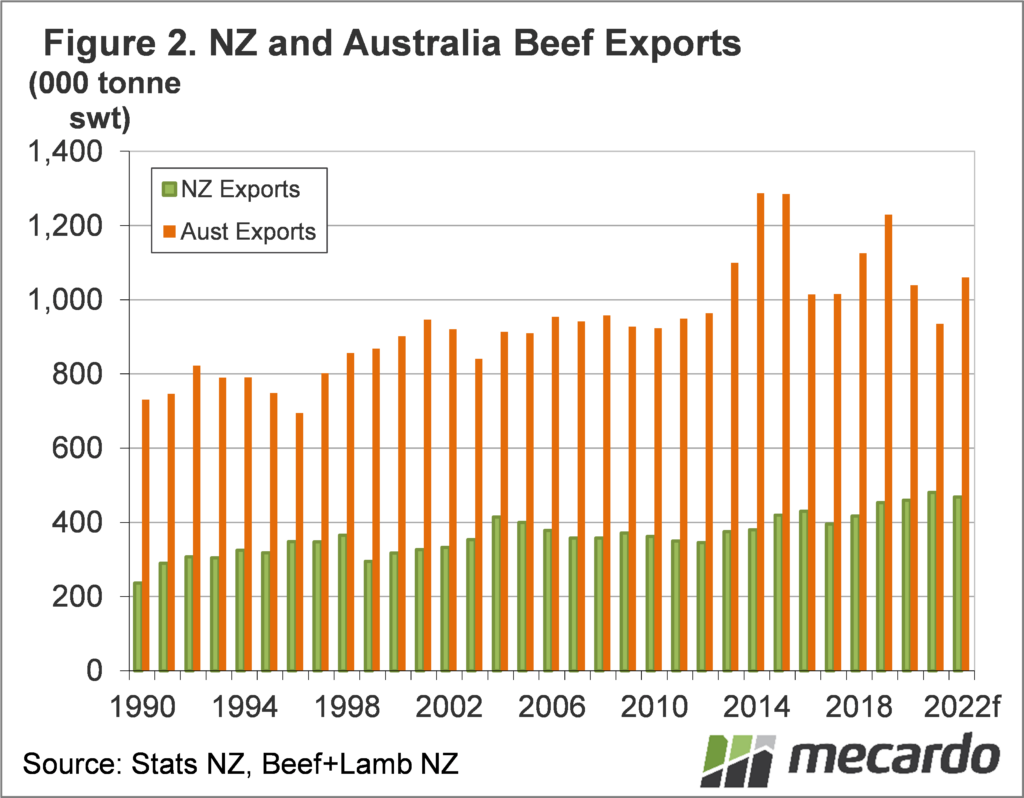We’ve just seen Australia prevail in a Trans-Tasman cricket match, which gave a little inspiration in terms of topics for this week. We’re not talking about cricket, but having a look at the competition for beef export markets, or more accurately in the current environment, the ability to supply increasing demand.
New Zealand punch above their weight in the sporting world, competing with Australia despite a smaller population. The story in meat markets is a little similar. New Zealand have a lot of cattle, and export a lot of beef, if you work on volume divided by area, and their exports have been rising.
A couple of weeks back we looked at the falling NZ sheep flock, which is being replaced by cattle. For much of the period from 1990 to 2014 it was dairy cattle taking hectares off not only sheep, but also beef cattle. In the last five years beef cattle have staged a recovery, with figure 1 showing a 12.6% recovery in the beef herd.
The rise in the beef herd has almost been matched by a fall in the dairy herd, with the total number of cattle in NZ increasing by just 0.5%. Beef+Lamb NZ are forecasting a further 2.5% increase in the beef herd in 2021-22, with the dairy herd forecast to steady.
An increasing beef herd, the associated higher slaughter weights and the liquidaton of the dairy herd, has driven an increase in beef exports from NZ over the last five years. Figure 2 shows NZ beef exports have increased by 21.5% from 2017 to 2021, and by 4.5% in the last year, to hit a record of 4.8 million tonnes.
Record NZ exports and falling Australian exports are expected to see NZ hit 50% of Australian volumes this year.
Beef+Lamb NZ are forecasting a 2.6% fall in beef exports in 2022 as the dairy liquidation halts and the beef herd rebuild continues. While the lower beef exports from NZ are small on a global scale, it does signal the end of the rise in NZ exports, which means growing demand for quality lean beef will again have to come to Australia.
What does it mean?
With finite area for red meat and dairy production, New Zealand doesn’t have the scope to increase herds in a similar fashion to Australia. This means the rising competition we have seen from NZ in exports markets over the last five years will wane, which bodes well for Australian export demand.
We know with the rapid increase in the Australian herd, we’ll need stronger demand to maintain prices at historically high levels.
Have any questions or comments?
Key Points
- The New Zealand Beef cattle herd has rebounded in the last five years.
- Increasing beef cattle numbers has helped drive NZ beef exports higher.
- It looks like export increases will slow in coming years, with cattle herd reaching their limit.
Click to expand
Click to expand
Data sources: Beef+Lamb NZ, Stats NZ, Mecardo














